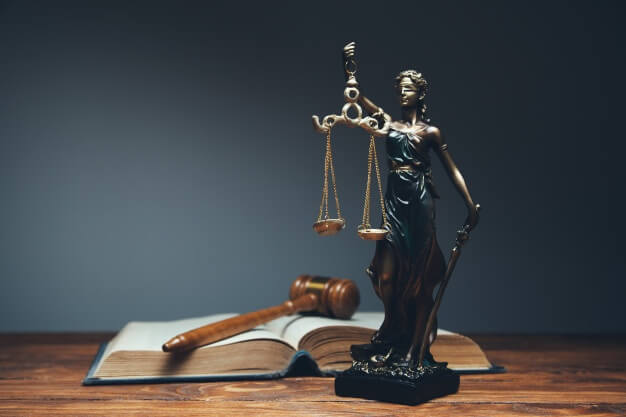This article is written by Tanish Dogra.
Table of Contents
Abstract
When we talk about ancient India, we think about dance, civilization, culture, tradition, mega temples, medicine, literature, astronomy, maths, etc. but one thing which is an essential thing for every society to survive is its legal system or jurisprudence. We Indians have one of the most advanced laws, since ancient times, and these ancient laws have some advancement as we see in the laws of the 21st century. The genesis of Hindu law is not from a particular book or by one person; but is a collection of many commentaries and its major chunk came from Rig Veda, and it is believed that Hindu law is divine law, it was God who revealed this entire knowledge to the sage’s when they are in the deep contemplation, and they later refined the conceptual ideas of life mentioned and explained in Vedas (Shruthi’s).
Introduction: school of jurisprudence
The Hindu law is also known as Dharam, which means righteousness, duty, and law, which applies to everyone, and it consists of truthfulness, non-injury, and generosity, among other virtues.[1] There are three sources of Dharma, the first one is Vedas, the second one is Smritis, and the third one is Achara. Smritis means remembrance of a tradition, which is preserved by the authors in the written form. The famous Smritis which we know are Manu Smriti(200BC 200CE), Yajnavalkaya Smriti(200-500CE), which are still relevant in the 21st century. The third source is Achara’s which means the customary law, which is followed by a particular group or community. We use Achara on the issue where the Vedas & Smritis are silent. (Historical Evolution of The Indian Legal System 2013) These three things together made ancient Hindu law as a holy trinity. The Dharma follows the law of natural justice, these laws are divine and cover all the facets of society whether its political, social, religious, or spiritual duty of a person, dharma make the life of an individual complete and make a person civilised.
Courts and Rajadharma
In India, we find a section of legal codes from 1st CE, which by reaching to 6th century have developed themselves in the form of legal procedure which is known as ‘Vyavahara’, we have found the evidence in the inscription of the Ashoka Empire, in which he told all his judicial officers to be impartial, and follow the Dharmashastras. According to Manu Smriti, the Ancient Hindu Law has, 18 titles which are similar to the modern laws, some of them are non-repayment of debt, deposit, partnership business, resumption of gifts, nonpayment of wages, duties of husband and wife, adultery, disputes between the master and the servant, breach of contract, gambling, theft, etc. (Rajander 2013)
One of the initial text which talks about how the conflict solves is Apastamba (third C. BCE), which talk about the character essential for being a judge, it states, “men who are elder, wise, and having vast knowledge of shastra who possessed unwavering faith towards their duties” should follow this noble profession of justice.[2] In ancient India; we have 6 courts with different jurisdictions. They are Kula (Family Council), Shreni (Council of trade or profession), Gana (Assembly of a village), Adhikrita (Court appointed by the King), Sasita (King Court), & Nripa (The King). Kaula helps to solve the family disputes, with the help of elderly family members, in Shreni, to solve the matter of trade dispute we have the mechanism to get the person who knows the profession, who accepts to be impartial and adjudicate the matter. Gana is the trend which we follow in the 21st century also, it is like a gram panchayat which resolves the dispute of the village. The Adhikrita is authorised by the sovereign, these courts solving disputes sometime Pratishtha, Apartishtitha, and Mudrita.[3] When we counter with an ancient idea of state how to govern a state, we see two courses of action.
- The first is Kautilya magna opus Arthshastra, which talks about the “rule with the inductive investigation of the phenomena of the state”.
- The second is an approach found in Dharma-sastra, which is the tradition of ‘Rajdharma’ (the law for Kings), which gave a comprehensive detail, how to establish a law-based society, by using hymns from Vedas. (McClish Mark 2018)
Manu Smriti along with Visnu Smriti emphasize Rajadharma, some topics which come in King’s jurisdiction are domestic administration, appointing spies, minister, and counsels, setting the land, law and order, judges, international relations, battlefield, famines, etc. But we also see some discrimination in society, in terms of law and Kings power to penalise, according to ‘Gautama Smirti’, ‘King has no authority to adjudicate matters between Bhramanas, he should be righteous in deed and speech, he should be well trained (abhivinīta) in the Triple Veda (trayī) and Investigation (ānvīkṣikī). He should be pure, with his senses under control (jitendriya), and furnished with virtuous assistants and policies’.[4] When Manu emphasised Rajadharma he put Ksatriyadharma as a subset or as a subtopic of Rajadharma. Manu put war as a duty of King to fight, “When the Kings fight with each other in battles with all their strength, seeking to kill each other and refusing to turn back, they go to heaven”, this is also a form to prove the dominance of their deity to other deities, of the King.
Punishment & legal procedure
The concept of Danda or Punishment came to do justice with the accused party and to discipline the guilty person, Manu talked about it is the duty of the King to maintain peace & humanity in his region, for this he can use danda as a tool. This authority to punish someone give excessive power to the King, and to stop King from taking an arbitrary decision, the law of Rajadharma, came, and Manu said, ‘King should inflict punishment on those deserving punishment only after he has fully ascertained the proclivity, as also the time and place, accurately, and considered carefully the ability of the criminal and the severity of the crime’.[5] But questions came in mind if King did something wrong who has the authority to check it, or gave punishment to King? Medhatithi[6] states that the King should have to punish himself or show his guilt by offering to Varuna.[7] He was known as the lord of Punishment. It is assumed that if Varun became angry with the King he throws them in water, as he’s also the lord of water. To Punish King for their wrong is an example of how Hindu law put even the King under the jurisdiction of law, which we still follow in modern laws, no one is greater than the law of the land.
Punishment in ancient era
During the ancient era, we had two types of punishments Corporal & Pecuniary/ Monetary, Bhramans are exempted from the corporal one. (Manu Smriti), only the serious and ugly cases go to the King for judgments, other than that the remaining cases are solved by the seriousness of cases by the courts (Kula, Shreni, Gana). In courts we also have our procedure for the witness, how they came and took oaths (sapatha) and tell the truth, and also penalties if they are in court. This concept was given by Gautama, and according to him we have two types of witnesses a) those who are listed by the litigants and b) anibaddha (people who are not listed). They take their oath in front of the Bhramans, King, and God.[8] To make the function of courts better Rishi Vasistha, introduced the classification of the evidence into three categories, i.e. witness, documents, and possession. Later this work of Gautama was modified by Kautilya, and he gave twenty-six sutras for registering the case and witness interrogation. (Olivelle 2018)
He also introduced the science of forensic to investigate the matter of murder, robbery, and theft, and to make criminal justice more effective he introduced the separate court called Kantakasodhana. In Arthashastra he also mentioned the procedure followed by the competent authority for investigation in which he wrote, to know the name, caste, occupation, family background, lineage, and authorities during the time of the investigation, asked from the person to tell in brief about their previous day. To protect innocent people from society, he came up with a principle which is now in the twenty-first century a human right, ‘all persons shall be innocent until proven guilty by the court of law’.
The punishment in ancient India was more brutal than that of today, which is relevant as per the norms and development of ancient society. The punishment is divided as per the court if the seriousness of issues is higher the court is also higher; if higher the court the punishment is also higher. It is the Kings who pronounced the danda, and the courts (Kala, Sreni, and Gana) pronounced the judgments. On the matters of the family disputes in the game, the elder wise man from the family be the judge and he is free to give the punishment as he wishes, and their no need for interference from the King and he is not allowed to give a serious bodily punishment to the family members.[9]
But in a case of misbehaviour, done by any family member the judge is free to do punish the individual physically either with a rope or with bamboo, and the rule is that they are only allowed to spank them in the back not in the head or chest if the judge change or hit in non-permitted area then it is considered as an offence same as theft. According to Narada, he talks about the right to give physical punishment to the individual is strictly registered to the King, the Teacher, and householder of each caste in his home affairs, it is because of the term independent herein that, he(King, Teacher & householder) has persons dependent on him, and he has to make their subjects follow a right path in society.
Conclusion
This note on the development of jurisprudence talk about how benignly law and legal institution develop in primitive India and it is not a work of one day, to develop this type of advanced system, in this article we first understand what are the things which make Hindu law, what r smritis, the importance of Vedas, in the Hindu religion, what r the rule of Manu, Kautaliya, Gautama, to develop the jurisprudence and how with their collective effort we saw world most ancient and still relevant legal system.
We also saw the courts(kula, shrein, and gana), for different crimes and the King’s court for the more obscene and vulgar crimes, and how the punishment is also different and the judges are also different w.r.t to the severity of the crimes, and we also saw how to integrate witness and a proper procedure develop in India, with three criteria of documents are important for a court of law to complete its proceeding, we also see how Kautilya develop the doctrine which we developed in the twentieth century, i.e the innocent until proven guilty to protect an accused from the society.
References
- Historical Evolution of The Indian Legal System. Delhi: The Secretary, CBSE, Shiksha Kendra, 2, Community Center, Preet Vihar, Delhi-110301.
- Dharma. Encyclopedia Britannica. Accessed Dec 7, 2020.
- https://www.britannica.com/topic/dharma-religious-concept.
- McClish Mark. 2018. “King.” In The Oxford History of Hinduism, by Jr Park Olivelle and Donald R. Davis, 257-272. Oxford: Oxford University Press.
- Olivelle, Patritk, ed. The History of Hinduism, A New History of Dharmasastra. Oxford, 2018.
- Kumar, Rajander, “Concept of Judiciary in Ancient India”. Global Research Services, no.2(2013): 80-82.
- McClish, Mark.”King Rajadharma”. In The Oxford History of Hinduism”, edited by Patrik Olivelle, 264. Oxford University Press, 2018.
- Varuna. Encyclopedia Britannica. Accessed Dec 10,2020.
- https://www.britannica.com/topic/Varuna.
- Olivelle, Patrik. 2018. “Legal Procedure: vyavahara.” In The Oxford History of Hinduism: Hindu Law, A New History of Dharmasastra, by Donald R. Davis, JR. Partrick Oivelle, 283-298. Oxford: Oxford University Press.
1. “Dharma,” Encyclopaedia Britannica, accessed Dec 7, 2020, https://www.britannica.com/topic/dharma-religious-concept
2. Olivelle, “ The Oxford History of Hinduism”, 284, http://www.srimatham.com/uploads/5/5/4/9/5549439/apastamba__dharma_grihya_sutras.pdf, (Apastamba is the sacred law of the Aryan Hindus possess a special interest beyond that attaching to other works of the same class because Āpastamba’s work is free from any suspicion of having been tampered with by sectarians or modern editors, and that it has an intimate connection with the manuals teaching the performance of the great and small sacrifices, the Srauta and Grihya-sūtras, by the same author. Thus in spite of its comparatively late origin, it is entitled to the first place in a collection of Dharma-sūtras)
3. Kumar, “Concept of Judiciary in Ancient India”, 80-82, Pratishtitha was established in village and town, Apartishtitha was a mobile court, and Mudrita was a higher court with the king’s seal.
4. McClish, “King: Rajadharma”, 264, The Gautama Dharmasutra, the oldest of the texts of the Dharmashastra, probably composed sometime between 600 and 400 B.C., concerns the sources of dharma, standards for both students and the uninitiated, the four stages of life, dietary rules, penance, rules concerning impurity, and many other regulations and rituals for Hindu life.
5. Ibid, 295.
6. Medhātithi is one of the oldest and most famous commentators on the Manusmṛti, more commonly known as the Laws of Manu. The Manusmṛti text is a part of the Hindu Dharmaśāstra tradition, which attempts to record the laws of dharma.
7. Varuna, “Encyclopedia Britannica”, accessed on Dec 10, 2020, https://www.britannica.com/topic/Varuna, (Varuna In the Vedic phase of Hindu mythology, the god sovereign, the personification of divine authority. He is often jointly invoked with Mitra, who represents the more-juridical side of their sovereignty—the alliance between one human being and another—while Varuna represents the magical and speculative aspects—the relationship between gods and human beings.
8. Olivelle, “Legal Procedure”, 285.
9. McClish, “Punishment: danda”, 279.
LawSikho has created a telegram group for exchanging legal knowledge, referrals and various opportunities. You can click on this link and join:
 Serato DJ Crack 2025Serato DJ PRO Crack
Serato DJ Crack 2025Serato DJ PRO Crack











 Allow notifications
Allow notifications



